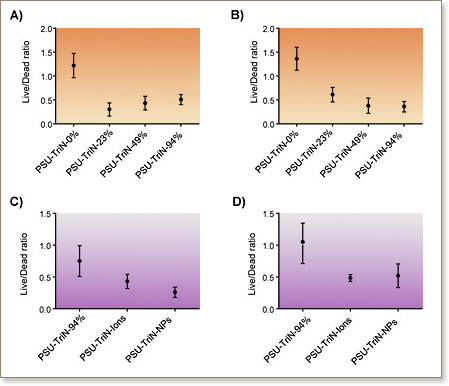Antibiofilm effect enhanced by modification of 1,2,3-triazole and palladium nanoparticles on polysulfone membranes
H. Cheng, Y. Xie, L.F. Villalobos, L. Song, K.-V. Peinemann, S. Nunes, P.-Y. Hong
Scientific Reports, 6, article number: 24289, (2016)

Biofouling impedes the performance of membrane bioreactors. In this study, we investigated the antifouling effects of polysulfone membranes that were modified by 1,2,3-triazole and palladium (Pd) nanoparticles. The modified membranes were evaluated for antibacterial and antifouling efficacy in a monoculture species biofilm (i.e., drip flow biofilm reactor, DFR) and mixed species biofilm experiment (i.e., aerobic membrane reactor, AeMBR). 1,2,3-triazole and Pd nanoparticles inhibited growth of Pseudomonas aeruginosa in both aerobic and anaerobic conditions. The decrease in bacterial growth was observed along with a decrease in the amount of total polysaccharide within the monoculture species biofilm matrix. When the modified membranes were connected to AeMBR, the increase in transmembrane pressure was lower than that of the non-modified membranes. This was accompanied by a decrease in protein and polysaccharide concentrations within the mixed species biofilm matrix. Biomass amount in the biofilm layer was also lower in the presence of modified membranes, and there was no detrimental effect on the performance of the reactor as evaluated from the nutrient removal rates. 16S rRNA analysis further attributed the delay in membrane fouling to the decrease in relative abundance of selected bacterial groups. These observations collectively point to a lower fouling occurrence achieved by the modified membranes.